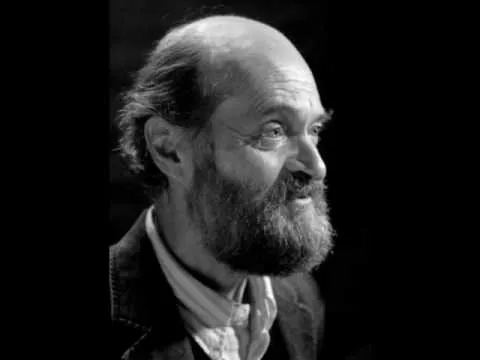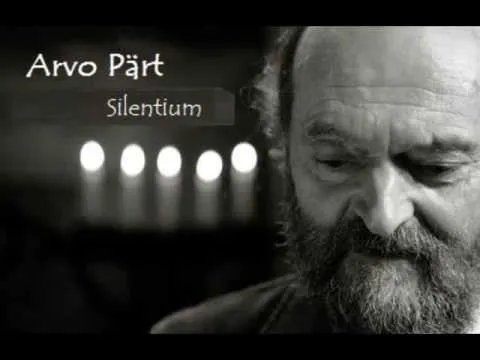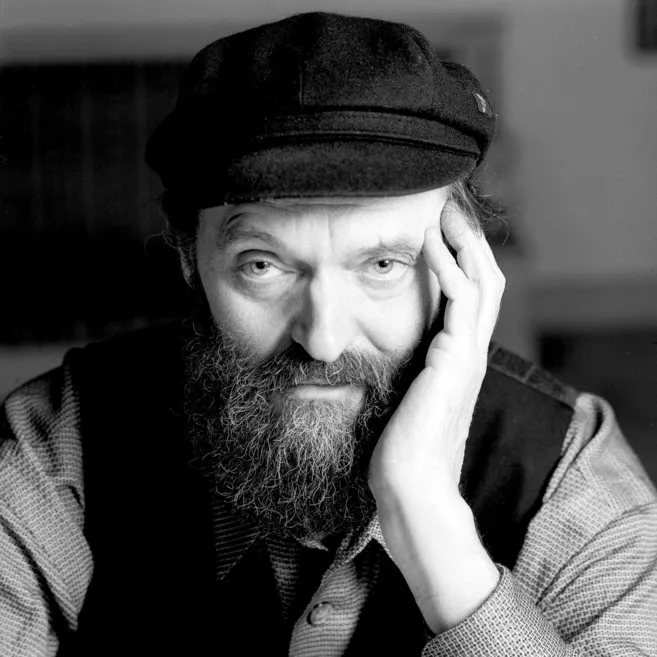
Arvo Pärt, photo
You, who have started to read this post, would maybe expect just a selection of sad tunes or musical pieces, as we are in a #SadSunday post. Sad songs from the field of popular music or pieces from the classical genre, my piano playing or just listening to an orchestra performance or other instrument that can bring those emotions we call sad. However, nothing from this, and even I would not classify this kind of music in the field of sad or depressive music. Maybe it leans more towards heavenly music or sacred music...a new way of composing... or is it just an algorithm made by an Estonian composer? As you can see from the title of the post, we are talking about Arvo Pärt, and we will see a bit of what is his way of composition tintinnabulation.
He is one of those musicians, whose creativity made him move through different phases and finally discovering a new method that will have a great impact on modern music. In 1976, he revealed a special and unique way of composing, a new musical language called tintinnabuli. Although there is no compositional school that strictly follows his way of creating music, still it affected the modern minimalistic way of composing, especially in the field of music written for movies.
The first revealed work composed using this new method was Fur Alina, a piano piece using basically just two voices. The first one is the melody voice and the second one is the tintinnabuli voice. This tintinnabuli voice is derived from a chord by finding the nearest chord tone from the melody note. I also read that this is a kind of using an algorithm in music (that was used for the first time by Guido D'arezzo about a thousand years ago, but that would be completely another topic to write about it). Arvo Pärt treats the melody and harmony in so different way that musicians until his discovery used to do. In the next few decades he has used and developed his technique, but here we will hear the very first composition he wrote in this style.
Very simple, stemless melody in B minor, accompanied by the tintinnabuli voice.
Fur Alina , source
I imagined myself playing this piece, which does not require a lot of virtuosity or technique but needs an open mind, patience and good equipment to record. And a nice grand piano for the reverberation, listening to the echoes and enjoying the connection between notes, making them so connected but at the same time so remote. Imagining a whole universe between each harmony that the two simple lines, the M (melody) voice and the T (tintinnabuli) voice create. What do you hear listening to this work? Do you hear what do I imagined, or do you hear hope, sadness, depression, silence, heaven, empty space or it just makes you scroll through it?
Let me know your opinion.
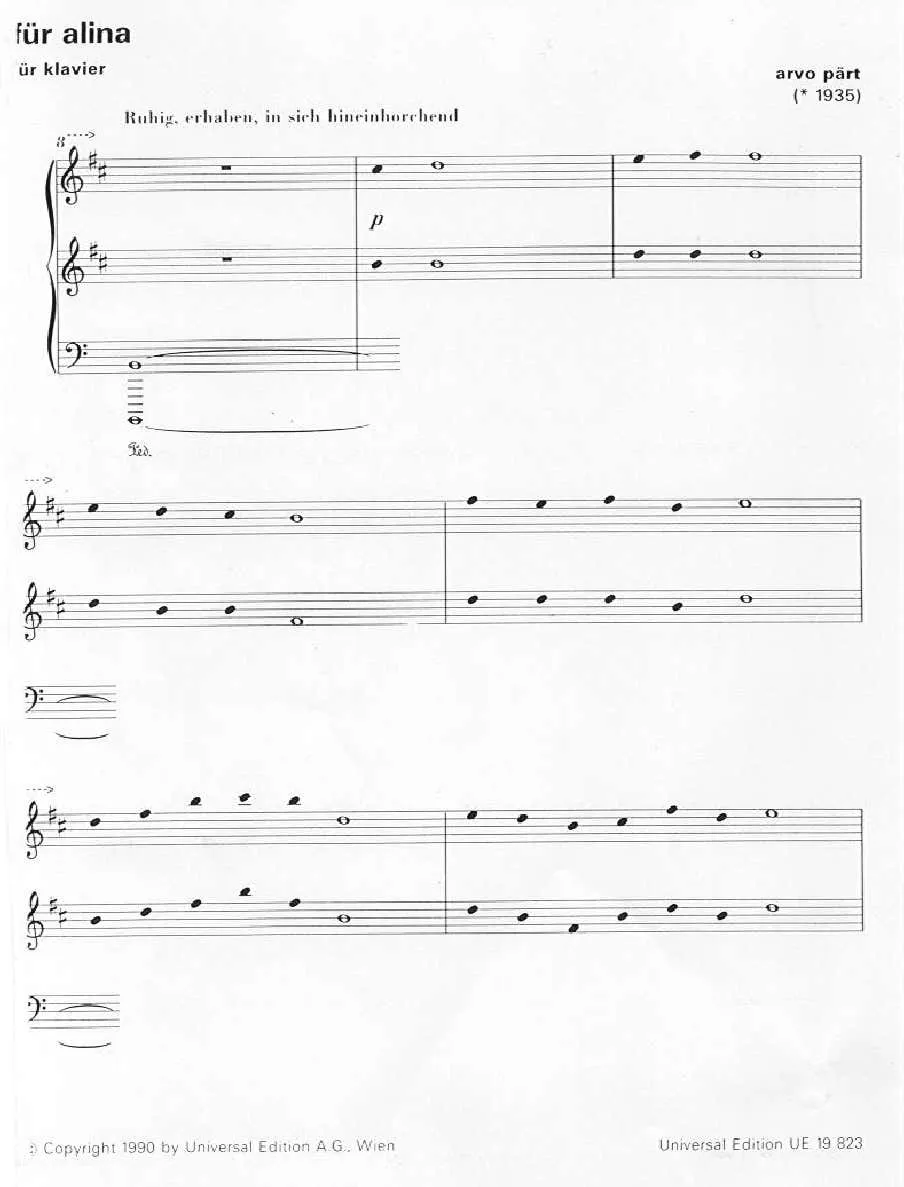
This is how simple is the written form of the composition, source. He is starting with one note, and in each measure he writes one more note, until reaching seven notes. Can a musical piece be more minimalistic? The result in sound? A new world.
My second piece by Arvo is one of his most famous ones, Spiegel Im Spiegel, written in 1978 for violin and piano. This piece combines more techniques. It is again a processed piece but has the qualities of a genius. It is entirely written in the key of F major and for the full length of the composition, he doesn't derivative from that key. Still it maintains interest in listening to it. It starts with the piano part with upward arpeggios accompanying the long notes of the violin. But, the arpeggios, although they are in the field of conventional diatonic harmony, change sometimes the middle note of the piano accompaniment, bringing the nearest note below the melody. Similar to what the composer does through the whole Fur Alina piece. He achieved the interesting sound using not the expected harmonization, but adding those extra notes that create special moments for our hearing. Also, there are some extra high and as well extra-low octaves he uses in the piano, bringing special sound.
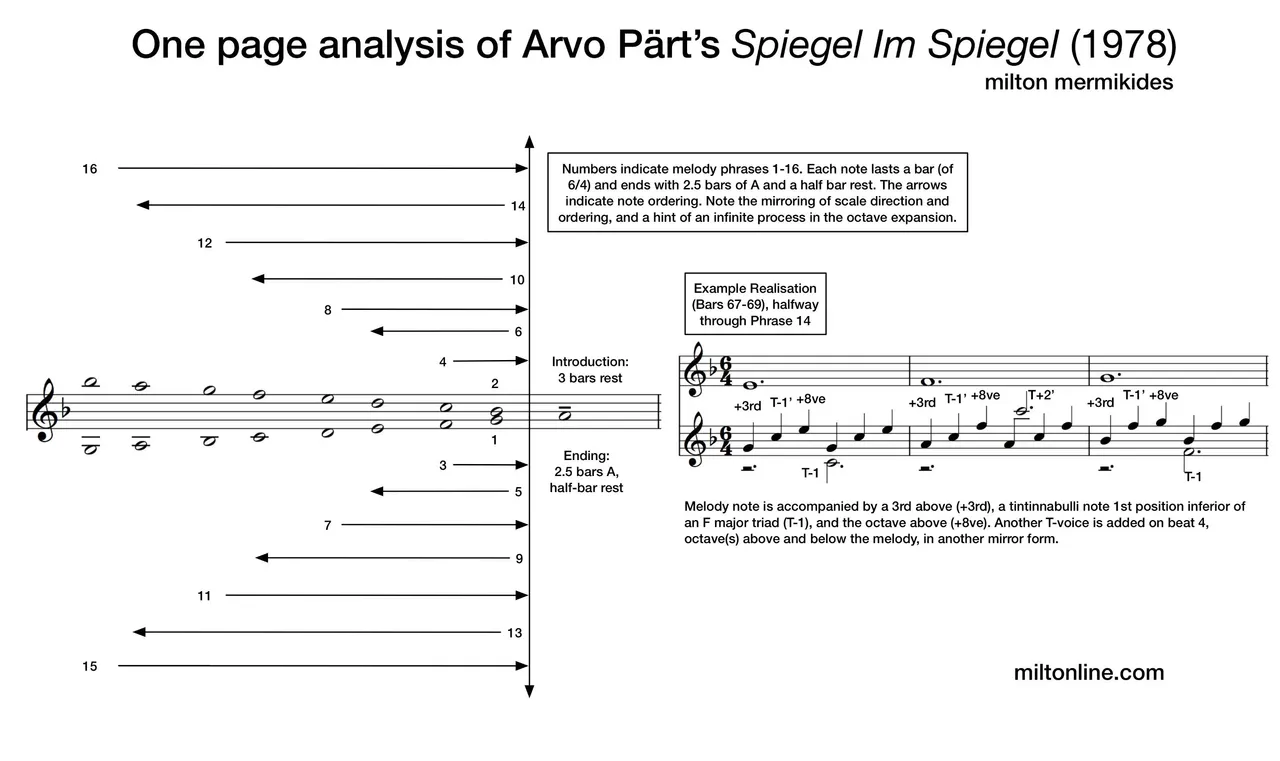
Source of the photo
The violin melody part plays just long notes from F major, separated by some rests that can sound just like improvisational moments. But of course, there is a deeper pattern in this too. If we would write down the letters of the notes played in the string part, we can get phrases that are getting longer and longer each time. Again similar to what we saw in Fur Alina. In the last phrase, there is just one note, the letter A. And it is not all. If we lay out the notes in a different way, starting with that A in the middle we will notice that the notes are going exactly in order up and another side in order down. The melody goes either of that centre point note A. And again, not just that. It goes each phrase further away from the centre in each direction. Like a mirror in a mirror, what would mean the title of the piece. I have listened to the explications and read thoroughly some analysis of this work, but I don't know if I messed up too much now... better just listen to the piece. What do you think of it? Strict maths creating such a music?
Spiegel im spiegel source
Next piece, Silentium. Silentium is the second movement of Arvo's piece Tabula Rasa. This movement is divided into 28 parts of 6 bars each and it is marked with without movement. We can enjoy a complete atmosphere of contemplation and rest. The composer combines here the use of a canon of proportion, the use of the tintinnabuli and the special use of the prepared piano. It brings an enigmatic sound as the prepared piano sounds out of tune. The repetition of that pattern and the extreme simplicity makes me listen to this beautiful music already now several times on repeat.
Silentium source
In Silentium, we deal again with mirrors, actually mirrored variations around a middle note, that sound consecutively in symmetrical pairs. In each repetition, a note of the scale is added progressively both up and down. This principle of adding is connected with the widening of the melodic range in the form of a cone. The instruments are reaching their limits with this composing style of Arvo Pärt. Little by little, an increasingly wide melodic curve is created, together creating a form of symmetrical proportions of beauty, and if you want to see how the instruments appear, it is reflected in the following graph:

Source of the graph.
So, ladies and gentlemen, let me know, what do you think of this special style of composition? Is it something you can listen to? Is it just pure mathematics or his inspiration comes from another dimension? I would say, a very intelligent composer, who dared to try new ways and letting his soul be in peace with the Creator writing simply beautiful music.
